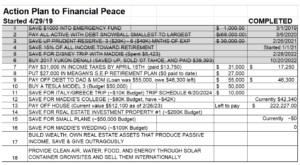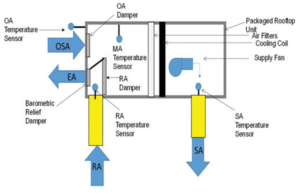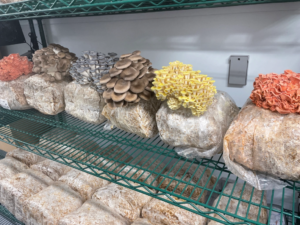An Insider’s View of 8 Indoor Grow Room Design Factors
November 2020 Blog
Overview
I am writing this blog as an outsider as I am not a grower, but rather an HVAC insider having spent the majority of my career solving indoor humidity problems using industrial dehumidifiers.
Many professionals in today’s controlled environment agriculture industry discuss the following variable commercial grow facility design considerations when starting a grow room design project:
- Benefits of choice of light source wavelength
- Precise illumination of the plant per day
- Elimination or reduction of pests with sealed environment
- Exacting fertigation capability
- Tightly controlled temperature and humidity
While this is a lot of variables, growers get to select and fine tune them to produce a consistent high-yield product that can be sold at a premium price to optimize grow room profitability.
8 Grow Room Design Factors Affecting HVAC Equipment Selection
From my HVAC insider’s perspective, what is probably a deep dark secret of the HVAC mechanical engineering community is how little exposure a design engineer has to the topic of dehumidification. At my training seminars, I ask engineers how much time they spent learning about dehumidification and humidification. A typical answer is 30 minutes to an hour.

So if the engineering experts haven’t been trained on dehumidification, how can I expect growers to understand a grow room dehumidifier? We have a communication issue about indoor grow room dehumidifiers, a critical topic that I hear about on every new project we work on, whether it is in the design phase or in operation.
Now don’t panic. The benefits of using an indoor grow room are there, but we must begin a project with an understanding of what the grower wants to achieve and the limitations of HVAC equipment for controlled environment agriculture.
Growers must address the following 8 important factors with their indoor grow facility design team at the beginning of a project, not after it is trying to become operational.

1. Lighting
Lighting choice will establish the amount of heat that will be added to the room and therefore the capacity of the HVAC systems cooling capacity. Changing light sources after this decision has been passed on to the mechanical engineer can produce improper HVAC capacity and control.

2. Temperature & Humidity Design
Growers must establish the grow room temperature and humidity set points before selecting their HVAC equipment. And by set points I mean exact values not a range. Too often I receive a request from a grower for something like 72F to 78F @ 45% to 55% relative humidity. Since an HVAC unit is rated at a specific point of temperature and relative humidity, the design professional must assume what they want and we all know what that means.
An HVAC system selected for one temperature and humidity set point may not work very well if it is being applied to a different set point after installation. Also if the change in temperature and humidity design conditions between lights on and lights off become too great, the HVAC unit size may need to be up to 50% larger. The grower must be very specific on their design conditions and understand the impact those conditions will have on the dehumidifier’s size (as well as on capital and operational costs).

While the expression “this is how the plant grows in Mother Nature” is accurate, Mother Nature does not have restrictions on maintaining the controlled environment that the HVAC system supplier must have to meet the target temperature and relative humidity settings. Keeping the HVAC system’s limitations in mind when deciding on grow room design condition set points will avoid issues later.

3. Growth Cycle
Plant size does matter. Smaller plants have less leaf density and transpire less moisture while large plants are the reverse-they have large moisture release. Plant size impacts the cooling and dehumidification requirements of the HVAC system, so the design team must decide on what size plants will be in each grow room. If a grow room is designed for late cannabis flower, but the grower then places early vegetative plants in the room and grow them to the harvest, the HVAC system may not have the correct capacity to attain design condition set points.
A grower needs to provide answers to the following questions about their grow room(s):
- Is the room a “harvest at once” or is it a “perpetual harvest” having plants of all sizes?
- Will the design temperatures and relative humidity set points change as the plant goes through its growth phases?
- Will the room reduce watering at the end of the plants’ life while lowering the temperature to stress the plant for peak cannabinoid oil production?
All these answers and more must be communicated at the initial design phase.

4. Air Distribution
The design goal is to have a homogenous environment in the grow room and under the canopy. Careful consideration to air duct design, use of additional fans and sensor locations are critical to a successful grow. The light’s radiation can provide false readings on the temperature sensor and poor duct design can cause short circuiting of the return air to the system. Either of these will have a direct impact on the HVAC system’s actual performance and the tightness of control in the zone.
5. Building Construction
Real estate selection has an impact on HVAC design. New construction allows growers to select the insulation and vapor barriers that eliminate extra design loads. Old warehouses are generally poorly insulated and without vapor barriers which will require larger HVAC units, extra humidification and auxiliary heating components.

6. HVAC Equipment Location
HVAC equipment is large. An upfront decision on HVAC equipment location is important for the design of the equipment, but many times grow room designers forget that HVAC equipment must be routinely serviced, at least to change the filters regularly. Difficult locations can prevent routine service from happening, which will decrease the unit’s life and impact its performance.

7. CO2 Control
At the design phase, growers need to advise how the facility will add CO2 to the grow room. If it is CO2 tanks, the HVAC equipment must have this ability to control the addition of the gas and provide appropriate safety and alarms. If outside air is to be used, then the extra load to the HVAC system must be calculated and added to the performance specification. The HVAC system design needs to include the ability to introduce CO2 to the room.
8. Capital Cost
Integrated HVAC equipment that controls both cooling and dehumidification during all phases of plant growth is more expensive than equipment designed to control the temperature of your office. Choosing the lowest cost HVAC equipment should come with a “Buyer Beware” warning decal because the two types of equipment have very different designs and control logic.

After a grower addresses the 8 issues above, the design team will start to define the type and capacity of required HVAC equipment. Changing many of the desired growing conditions after an HVAC system has been specified, built and installed will be very costly if not impossible. Making sure everyone on a grow room design team agrees on the grow room environment parameters is absolutely critical to a successful grow operation.


